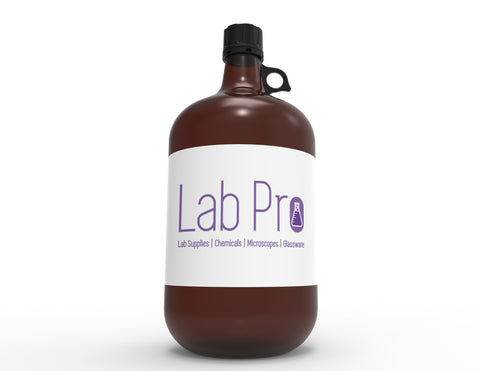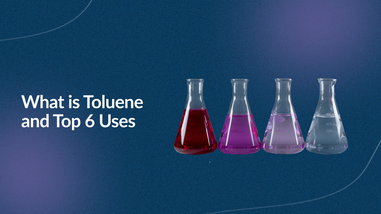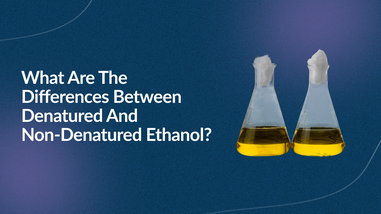- No products in the cart.
What’s The Difference Between Pentane and n-Pentane?
Pentane Versus n-Pentane: The Five-Carbon Conundrum
Pentane is an alkane with the chemical formula C5H12. The three structural isomers of pentane are n-pentane, isopentane, and neopentane. Although these three similar compounds are often sold as a mixture of the three, the isomers have different boiling and melting points. It is important to note that the IUPAC name for pentane is n-pentane. To avoid confusion when purchasing pentane, check the SDS or technical data sheet to ensure that you are ordering the correct isomer or mixture.
Pentanes are often used for liquid chromatography, as blowing agents, and as solvents. Due to the non-polar nature of pentane and its low boiling point, it is well-suited as a solvent for cleaning in the aerospace, automobile, electronic, and defense manufacturing industries. Other sectors that utilize pentane as a solvent are petrochemical, pharmaceutical, and coatings. Lab Pro offers pentane, n-pentane, and the octane 2,2,4-treimethylpentane in convenient quantities for your research or production endeavors.

Pentanes: Structure and Function
The three isomers of pentane are shown below (n-pentane, isopentane, and neopentane). Pentanes are cost-effective solvents that are the most volatile liquid alkanes at room temperature. These quick-to evaporate chemicals are non-polar and will only dissolve in solvents with similar properties such as aromatics, chloroalkanes, and ethers.
Some of the properties of pentane isomers are listed in Table 1. The more branched isomers of pentane have higher stability, higher vapor pressures, and higher flash points, than n-pentane. Neopentane has the lowest boiling points of the three and is a gas at room temperature. N-pentane is the preferred blowing agent for expanded polystyrene and polyethylene manufacturing and used as a solvent in column chromatography. Chinese patent CN102558480A an isopentane and n-pentane co-foaming system for rigid polyurethane foam.

Cyclopentane has a ring structure and has two fewer hydrogen atoms than pentane (C5H10), so it is not an isomer of pentane. Cyclopentane is gaining popularity as a replacement for traditional refrigerants such as CFCs. Cyclopentane is a major component of gasoline, diesel, and jet fuel. The National Renewable Energy Laboratory recently announced that it will be scaling up a process of converting corn stover into a cyclohexane-rich sustainable aviation fuel.1

2,2,4-trimethylpentane, or isooctane, is an octane with a pentane backbone with the chemical formula C8H18. It is frequently used as a solvent in organic synthesis and an entrainer for azeotropic distillation, for example to dehydrate ethanol. In 2020, Łukasz Dąbrowski found that isooctane is an effective keeper for the determination of organic pollutants.2

Table 1: Properties of Pentanes, Cyclopentane, and Isooctane
|
|
Isomer of Pentane |
5-Carbon that is not an Isomer of Pentane |
Octane with Pentane Backbone |
||
|
Preferred IUPAC name |
Pentane |
2-Methylbutane |
2,2-Dimethylpropane |
Cyclopentane |
2,2,4 Trimethylpentane |
|
Other names |
n-Pentane |
Methylbutane |
Neopentane |
Pentamethylene |
Isooctane |
|
|
Quintane |
Isopentane |
Tetramethylmethane |
|
|
|
|
Refrigerant -4-13-0 |
|
|
|
|
|
CAS |
109-66-0 |
78-78-4 |
462-82-1 |
287-92-3 |
540-84-1 |
|
Chemical formula |
C5H12 |
C5H12 |
C5H12 |
C5H10 |
C8H18 |
|
Description |
Alkane |
Branched-chain saturated alkane |
Double-branched chain alkane |
Alicyclic hydrocarbon |
Isomer of octane |
|
Vapor pressure |
57.9 kPa at 20°C |
76.992 kPa at 20°C |
146 kPa at 20°C |
45 kPa at 20°C |
5.5 kPa at 21°C |
|
Flash point |
-49°C |
-51°C |
<-7°C |
-37.2°C |
-12°C |
|
Melting point |
-130.5 to -129.1°C |
-159.9°C |
-16.6°C |
-93.9°C |
-107.38°C |
|
Boiling point |
35.9 to 36.3°C |
27.8 to 28.2°C |
9.5°C |
49.2°C |
99.30°C |
|
Density (O°C, kg/m3) |
621 |
616 |
586 |
751 |
692 |
|
Uses |
Solvent, raw material, fuel component, aerosol propellant, reaction media for polymerization, HPLC solvent |
Drive turbines in geothermal power production, cryosectioning in histology, component of natural gasoline |
Raw material for butyl rubber, chemical intermediate in research, present in natural gas and petrol fuel mixture |
Raw material for resins and rubber adhesives, blowing agent for polyurethane foam, refrigerant alternative |
Increase knock resistance of gasoline |
|
|
Uses for mixture of pentanes |
|
|
||
|
|
Blowing agent for foams |
|
|
||
|
|
Working medium geothermal power stations and refrigerants |
|
|
||
|
|
Solvents for pesticides |
|
|
||
|
|
Solvent for liquid chromatography |
|
|
||
Safety
Pentanes and related solvents highly flammable. Heating will cause rise in pressure with risk of bursting. Vapor/air mixtures are explosive. Store in tightly closed containers in a cool, well-ventilated area. Pentanes are incompatible with strong oxidizers. Air-supplied respirators are recommended when handling, as pentanes will irritate eyes, skin, nose, and lungs. Isooctane is a nephrotoxin.
Pentanes
Pentanes are often sold as mixtures of the three isomers, or as single components. Compounds like cyclopentane and trimethylpentane are not true pentanes per definition. These compounds are similar in that they are highly flammable and have similar uses, but they are not always interchangeable. Lab Pro stocks technical grade pentane and n-pentane for your ground-breaking manufacturing or research needs.
Note: These products and chemicals are meant to be used for research, industrial work, cleaning or disinfecting and should always be stored out of the reach of young children or infants.
For over 40 years, Lab Pro Inc. has been committed to delivering the highest quality chemicals, ESD protection, laboratory and cleanroom PPE supplies to medical device and electronic manufacturing laboratories worldwide. To learn more, visit the biggest Lab Supply showroom in California, or contact us online or at 888-452-2776.
References
- Hermens, G.H; Freese, Thomas; J. an den Berg, Keimpe; Van Germer, Rogier; Feringa, Ben. Coating from Nature. Science Advances. 2020 Dec 16; Vol. 6, no. 51, eabe0026. DOI: 10.1126/sciadv.abe0026
- Dąbrowski Ł. Evaluation of Solvents Used as Keepers in the Determination of Organic Pollutants by GC/MS. Molecules. 2020 Sep 25;25(19):4419. doi: 10.3390/molecules25194419. PMID: 32992997; PMCID: PMC7582485.













































I would like to buy isopentane for lab testing. Just need 75 to 100 ml
How is it sold ? What is the lead time?